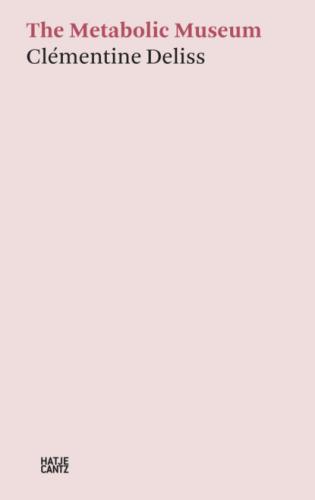Lothar Baumgarten, James Clifford, Hans-Jürgen Heinrichs, Peter Pakesch, Dan Peterman, Issa Samb, Teimaz Shahverdi, Sebastian Schellhaas, and Richard Sennett were trusted interlocutors who accompanied me while I tried to fine-tune new relations between museum collections and contemporary meanings. Finally, I would like to show my respect to the many friends in Frankfurt who helped me through various phases of this journey, in particular Ann Anders, Rüdiger Carl, Konstanze Crüwell, Jutta Ebeling, Uwe Fischer, Susanne Gaensheimer, Bärbel Grässlin, Tamara Grčić, Raphael Gross, Wolfgang Günzel, Nikolaus Hirsch, Phyllis Kiehl, David Hofferbert, Michael Hofferbert, Stefan Mumme, Yvette Mutumba, Alexandra Papadopoulou and very Frankfurt, Philippe Pirotte, Tobias Rehberger, and Bernd Vossmerbäumer.
Manifesto for the Post-Ethnographic Museum
Frankfurt/New York, October 2013
Anomalous and anachronistic:
It’s about working with a collection
that belongs to another time
that belongs to other people
that is deeply connected to the histories
of European colonialism and trade
that is contested and will continue to be contested
whose potential for referentiality is far from expended
whose restitution is undeniable.
Domestic research:
It’s about working with existing architecture not against it
moving between apartments, studios, archives, and labs
finding structural solutions for the installation of artifacts
repositioning collections both conceptually and physically.
It’s about rethinking possibilities
of research inside a museum
through self-critical and recursive inquiry
slow, prone to change, not always visible
reintroducing a laboratory into the practice of a museum
developing new assemblages based on historical collections
building a workshop for the production of prototypes
constructing an exhibition out of this continuing procedure.
Remediation over time:
It’s about daring to change
the anthropological classification of the collection
suspending the logos of ethnos
and earlier organizing principles:
region, religion, ethnic group, culture, society, and function
developing alternative metaphors through dialogical research
healing a deficient situation
shifting medium, enabling interpretation.
Curating neighborhoods:
It’s about inviting artists, designers,
lawyers, writers, historians,
and anthropologists in residence
those who connect to the original source of the collection
those who come from elsewhere
rubbing shoulders through their engagement with the collection.
It’s about making rooms available to visitors
encouraging the public to usurp the museum
to shelter in it, study, and meet
taking in exhibits through the corner of one’s eye
fully deploying the educational brief of the museum
checking the open access digital studio.
The Museum-University:
It’s unequivocally collection-centered
working outward from actual exhibits
deconstructing earlier archives
and histories of ethnographic museums
introducing external impulses,
an epistemological generalism
a democratic intellect
a non-standardized education
as independent as possible
providing a new platform for professional development
connecting the next generation of global cultural protagonists
from curatorial studies, cultural studies, postcolonial studies,
contemporary art, design, performance, art history, anthropology,
creative writing, law, ecology, mathematics, and more,
breaking open the disciplines of the past and their collections.
In the period leading to my move to Frankfurt, I walked through as many ethnographic museums in Europe as I could. I wanted to witness their status in contemporary civil society, understand the contradictions evoked by their outdated modes of display, and learn more about the power structures behind the inordinate mass of artifacts held under lock and key. I began by focusing on the immediate constituents of the museum experience. I sought to match the body of the visitor with the corpus of the collection and the broader metabolism of the museum. I wondered in what manner members of the public move through an exhibition. How long do they engage with the displayed artifacts? What is the relationship between seeing, feeling, and thinking? Are they provided with a chair purposefully placed in front of a vitrine for lengthier contemplation? Or do they stand upright as if facing a screen, ready to swipe on, and rarely moving closer or bending down to peer at the underside of an exhibit? At the British Museum, a guard told me of the fainting fits and panic attacks he witnessed, regularly forcing him to give up his chair. This was the public’s biggest complaint: that only one small bench was available to sit on in a room with an expansive exhibition.
The museum as a spatial configuration of inhabited meanings adapts only very gradually to change. Timing is a curatorial unit, place is clearly demarcated, artworks are hung according to norms, lighting and air humidity are coordinated with conservation requirements. Visitors readily accept this monitoring environment, which anchors and regulates their perception. If a video is projected, there may be the opportunity to lie on a carpeted floor, slump on a mattress, or find a stool to sit on. Hours can be spent in this way because new media are recognized as requiring a longer period of intake than a painting, photograph, sculpture, or set of artifacts. Robert Harbison noted in 1977, at a time when video works began entering the museum, that the “immersion in the object that stops time is achieved by treating it as an existence to be lived in rather than something to be stopped in front of or looked at, and one can almost tell from people’s movements whether
